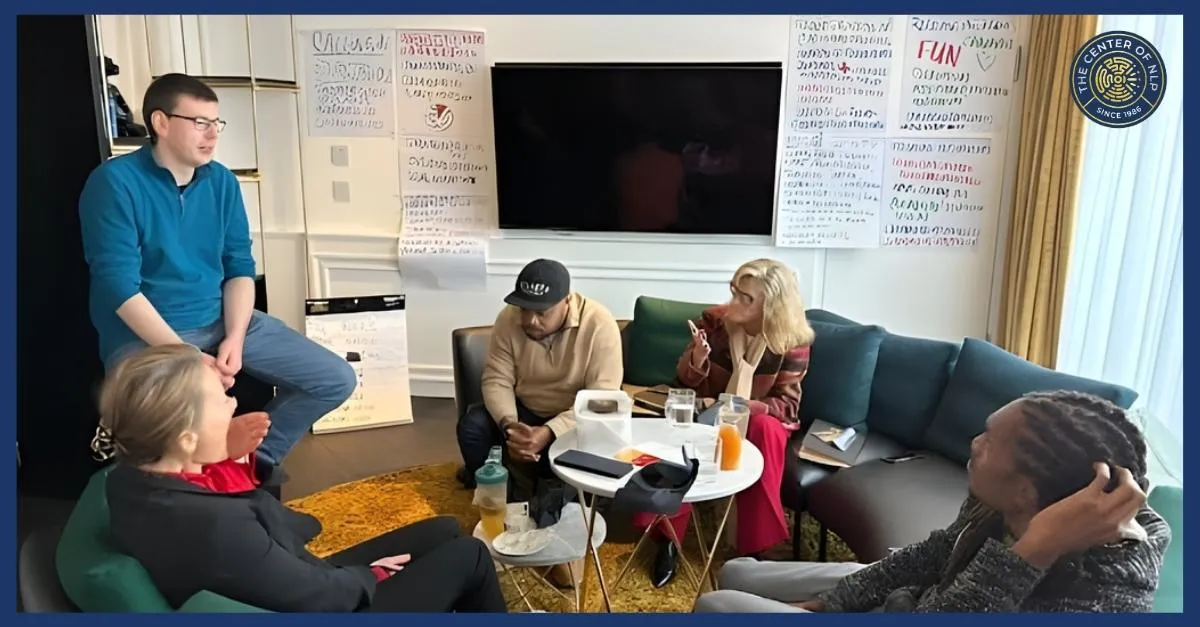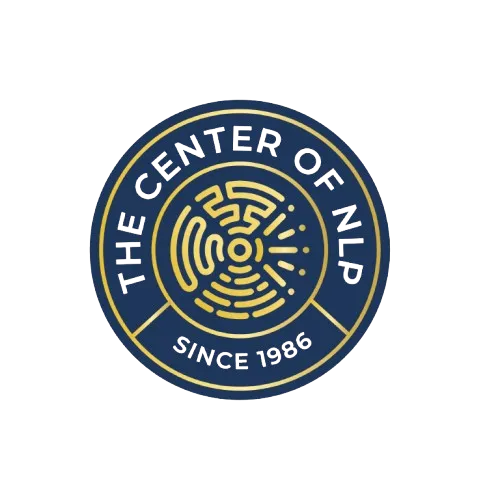
How Do 5 NLP Coaching Techniques Build Better Communication?
Communication is the bridge between ideas and impact. Every interaction, whether with clients, teams, or loved ones, depends on how clearly we can share our thoughts and how deeply others can understand them. Yet, even skilled professionals often find themselves misunderstood, misinterpreted, or unable to connect at the level they desire.
The result is frustration: goals are delayed, trust is weakened, and relationships lose their spark.
This is where NLP coaching techniques step in. Neuro-Linguistic Programming shows us how language, thought patterns, and behavior are linked. By applying simple but powerful methods, we can transform communication from a daily struggle into a tool for influence, clarity, and connection.
Let’s look at five key techniques and how they reshape the way we communicate in leadership, coaching, and personal growth.
Ready to transform your conversations? Discover NLP coaching techniques now.
The Role of NLP Coaching in Everyday Conversations
Before diving into specific methods, it’s important to see how NLP coaching shows up in daily communication. We often think of NLP as something used in training rooms or therapy sessions, but its real power lies in simple, everyday interactions.
When you pause to really listen to a colleague, you’re practicing rapport.
When you shift a stressful moment into a calm state before speaking, you’re using anchoring.
When you guide someone to see a problem from a fresh angle, you’re applying reframing.
In other words, NLP communication isn’t limited to coaching sessions, it’s a life skill. Coaches, leaders, and individuals who use these tools daily naturally build stronger relationships, resolve conflict faster, and create more trust in conversations.
1. Rapport Building Through Mirroring and Matching
Think back to a time when you met someone new, and within minutes, it felt like you had known each other for years. That instant connection was rapport, a sense of trust that makes communication effortless.
In NLP, rapport is built through mirroring and matching. This doesn’t mean copying someone like a robot; it means reflecting their energy, pace, and tone in a natural way.
For example:
If a client speaks slowly and calmly, responding in the same pace puts them at ease.
If a team member is enthusiastic and animated, meeting their energy creates alignment.
Why does this matter? Because people trust those who make them feel understood.
In NLP communication, rapport creates an environment where people lower their guard.
In NLP leadership, it builds loyalty and connection that inspires teams.
In NLP coaching, it reassures clients that their challenges are valued.
When rapport is established, conversations move from transactional to transformational.
2. Anchoring Positive Emotional States
Words are not neutral. They carry emotional weight, and in conversations, emotions often matter more than facts. NLP uses anchoring to help people access empowering emotions in the moments they need them most.
Imagine a leader preparing for a tense meeting. By anchoring confidence to a simple gesture, such as pressing two fingers together, they can instantly summon a sense of calm and control. That state changes the energy of the entire room.
Anchoring can be applied widely:
NLP coaching helps clients break free from fear and anxiety.
Leaders use anchoring to remain poised during conflict.
Individuals apply it in personal relationships to replace hesitation with empathy.
Think of anchoring as emotional first-aid. Instead of being hijacked by fear or frustration, you choose the emotional state that supports your communication goals.
3. Reframing Perspectives for Better Understanding
Two people can look at the same situation and tell completely different stories about it. The facts remain constant, but the meaning changes. NLP calls this reframing—shifting perspective to create new possibilities.
For instance, a client who sees rejection as failure might be guided to see it as feedback. A leader might reframe deadlines from being “pressures” to being “opportunities to showcase efficiency.”
This tool reshapes communication in powerful ways:
NLP communication becomes solution-focused instead of conflict-driven.
NLP coaching helps clients break free from limiting beliefs.
NLP leadership motivates teams by turning challenges into growth opportunities.
Reframing is not about sugarcoating reality. It’s about unlocking new meanings that drive action rather than resistance.
Begin your transformation journey with professional NLP coaching.
How NLP Leadership Improves Team Communication
At its core, leadership is communication. Teams look to their leaders for clarity, direction, and confidence. This is where NLP leadership skills shine.
By combining rapport, reframing, and anchoring, leaders create environments where teams feel valued and motivated. Some benefits include:
Building trust quickly with diverse groups
Reducing workplace conflict by shifting perspectives.
Inspiring action by aligning communication with team values.
A leader who masters NLP coaching techniques doesn’t just give instructions, they inspire collaboration and loyalty. Teams follow because they feel understood, not because they have to.
4. Using Sensory Language for Deeper Connection
People don’t just listen with their ears, they process the world through their senses. Some “see” ideas, others “hear” clarity, and some need to “feel” alignment. NLP calls this our representational system.
By tuning into someone’s preferred system, communication becomes personal and impactful.
To a visual person: “Can you picture where this is going?”
To an auditory person: “Does this sound like the right approach?”
To a kinesthetic person: “How does this feel when you think about it?”
Why does this matter? Because when we speak another person’s sensory language, our message resonates at a subconscious level.
In NLP coaching, it helps clients internalize breakthroughs.
In NLP leadership, it ensures the message reaches every personality type.
In life, it makes conversations “click” with the listener’s experience.
5. Meta-Model Questioning for Clarity
One of the biggest barriers to communication is vagueness. People often use broad, generalized statements like:
“Nobody listens to me.”
“I can’t handle this.”
These phrases leave room for misunderstanding. NLP’s meta-model questioning drills deeper to uncover the truth behind such statements.
Examples:
“Nobody listens?” → “Who specifically?”
“I can’t handle this?” → “What, exactly, feels unmanageable?”
By asking precise questions, coaches and leaders cut through emotional fog to get clarity.
In NLP communication, this prevents confusion.
In NLP coaching, it reveals limiting beliefs hidden under vague words.
In NLP leadership, it leads to smarter decision-making.
Meta-model questioning transforms conversations from vague to actionable.
Inspire your team’s success with practical NLP leadership strategies.
How These Techniques Work Together
Each of these techniques on its own is powerful. But together, they create a complete system for transformation.
Rapport builds trust and openness.
Anchoring ensures emotional balance.
Reframing shifts meaning to unlock new solutions.
Sensory language creates resonance.
Meta-model questioning reveals clarity.
Whether applied in NLP leadership, coaching sessions, or daily conversations, these tools elevate communication from ordinary to extraordinary.
Practical Tips to Apply NLP Coaching Techniques Daily
Learning the techniques is just the start, application makes the difference. Here are a few simple ways to practice them every day:
Start meetings by matching the tone and pace of others to build rapport quickly.
Use a subtle physical anchor (like touching a pen) to access confidence before presentations.
When someone expresses a problem, reframe it by asking: “What could this make possible?”
Pay attention to sensory words people use and mirror them in your response.
Challenge vague statements with gentle meta-model questions.
These small habits, practiced consistently, create big shifts in how people respond to you. Over time, they make NLP communication feel natural and effortless.
Conclusion
Better communication isn’t just about choosing the right words, it’s about understanding human behavior, emotional triggers, and the way people process meaning. The five NLP coaching techniques outlined here provide a framework to do exactly that.
By mastering rapport, anchoring, reframing, sensory language, and meta-model questioning, you gain more than communication skills. You gain influence, confidence, and the ability to lead conversations toward meaningful outcomes.
Whether you are a coach guiding breakthroughs, a leader shaping culture, or an individual seeking stronger relationships, NLP coaching offers tools that bring clarity and connection.
When communication becomes this intentional, it transforms lives, businesses, and communities, one conversation at a time.
Grow into the leader others trust with expert NLP leadership tools.
FAQs
1. What are NLP coaching techniques?
NLP coaching techniques are practical tools that help improve how people think, communicate, and achieve goals.
2. How can NLP coaching improve communication?
NLP coaching enhances listening, builds empathy, and creates clarity, making conversations more effective.
3. Why is NLP leadership important in the workplace?
NLP leadership helps managers inspire, motivate, and guide teams with stronger emotional intelligence.
4. Can NLP coaching techniques help in personal growth?
Yes, NLP coaching techniques build confidence, reduce limiting beliefs, and support personal breakthroughs.
5. Who benefits most from NLP communication skills?
Professionals, leaders, and anyone seeking better relationships can benefit from NLP communication skills.

